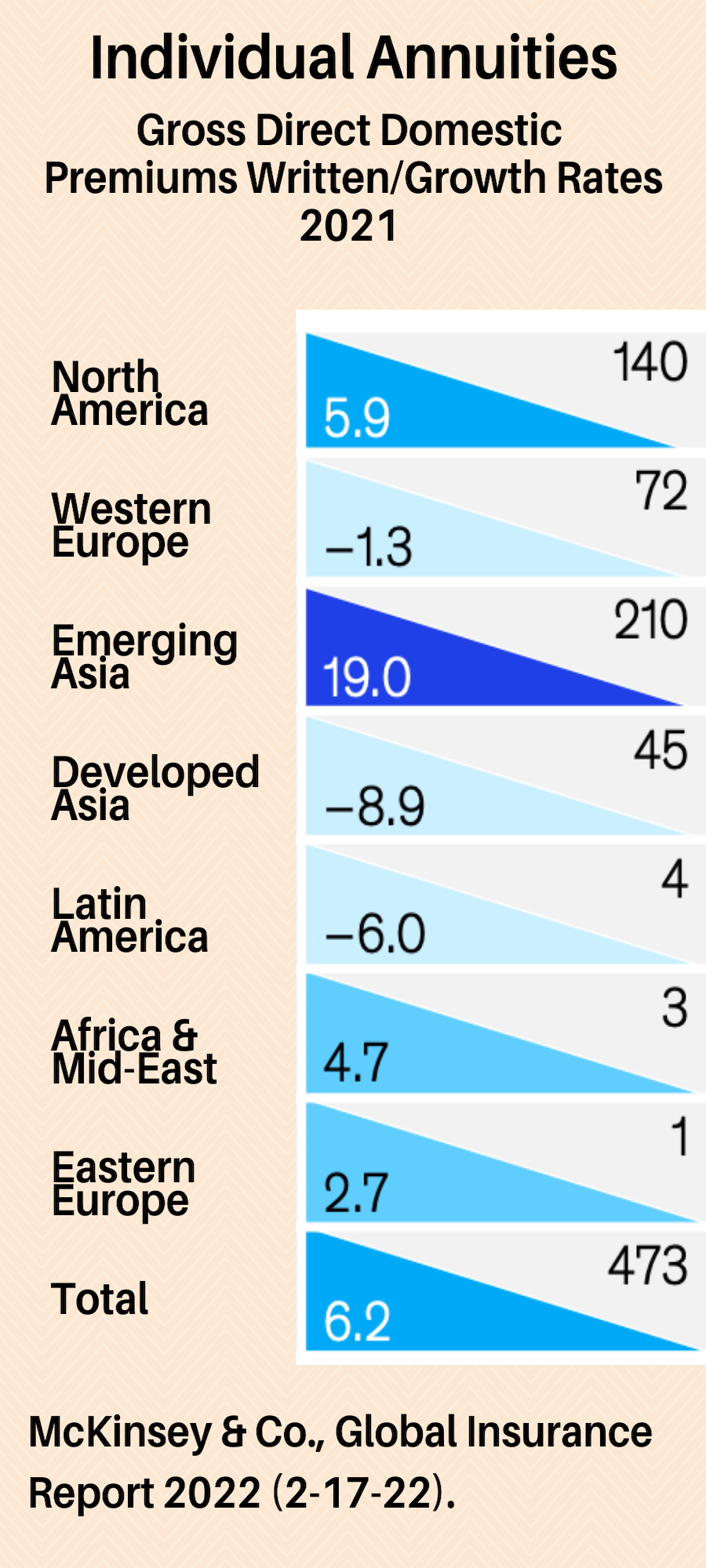
Individual Annuity Premiums, by Region: McKinsey

IssueM Articles

American Life & Security Corp., a subsidiary of Midwest Holdings that issues indexed annuities, has received a “Good” rating from AM Best. According to previous announcements, Midwest Holdings also has a reinsurance subsidiary in Vermont, Seneca Re, and relies on alternative asset management expertise from another affiliate,1505 Capital.
But the firm, which appears to be replicating the increasingly popular strategy of using indexed annuities as a source of stable, long-term financing and reinsurance to manage capital, has seen its share price drop by half since last November 11. Its co-CEO resigned that month.
AM Best said it has affirmed the Financial Strength Rating of B++ (Good) and the Long-Term Issuer Credit Rating (Long-Term ICR) of “bbb+” (Good) of American Life & Security Corp. (American Life) (headquartered in Lincoln, NE). The outlook of these Credit Ratings (ratings) is positive. According to a release this week:
The ratings reflect American Life’s balance sheet strength, which AM Best assesses as strong, as well as its adequate operating performance, neutral business profile and appropriate enterprise risk management.
The positive outlooks reflect a continued further improvement in American Life’s balance sheet strength metrics, especially financial flexibility, along with AM Best’s expectation that the company’s risk-adjusted capitalization will remain at the strongest level in the near term, as measured by Best’s Capital Adequacy Ratio (BCAR). AM Best also expects that the company will continue its upward trajectory in operating performance, supported by strong internal capital generation, and further enhance its domestic market position as it executes its strategic business plan.
The balance sheet strength assessment of strong also takes into account American Life’s conservative investment strategy and the high use of reinsurance agreements, even though there is a collateralized trust to support the reinsurance arrangements.
For the most part, the technology–enabled life/annuity carrier has outperformed its financial targets over the past two years, except for 2020 when it fell a bit short; the early trends are still considered fairly modest as the company continues to obtain additional dedicated reinsurance partners as planned.
AM Best believes that American Life will continue to focus on the execution of the company’s previously announced strategy despite the senior management changes, and expects the company to have, as planned, an upward trajectory in operating performance, supported by strong internal capital generation. AM Best will continue to monitor results closely against future growth projections.
The Securities and Exchange Commission voted this week to propose amendments to Form PF, the confidential reporting form for certain SEC-registered investment advisers to private funds. The proposed amendments are designed to enhance the Financial Stability Oversight Council’s (FSOC) ability to assess systemic risk as well as to bolster the Commission’s regulatory oversight of private fund advisers and its investor protection efforts in light of the growth of the private fund industry.
“Since the adoption of Form PF in 2011, a lot has changed,” said SEC Chair Gary Gensler. “The private fund industry has grown in size to $11 trillion and evolved in terms of business practices, complexity of fund structures, and investment strategies and exposures. The Commission and Financial Stability Oversight Council now have almost a decade of experience analyzing the information collected on Form PF. We have identified significant information gaps and situations where we would benefit from additional information. Among other things, today’s proposal would require certain advisers to hedge funds and private equity funds to provide current reporting of events that could be relevant to financial stability and investor protection, such as extraordinary investment losses or significant margin and counterparty default events. I am pleased to support it.”
The proposed amendments would require current reporting for large hedge fund advisers and advisers to private equity funds. These advisers would file reports within one business day of events that indicate significant stress at a fund that could harm investors or signal risk in the broader financial system. The proposed amendments would provide the Commission and FSOC with more timely information to analyze and assess risks to investors and the markets more broadly.
The proposal also would decrease the reporting threshold for large private equity advisers from $2 billion to $1.5 billion in private equity fund assets under management. Lowering the threshold would result in reporting on Form PF that continues to provide robust data on a sizable portion of the private equity industry. Finally, the proposal would require more information regarding large private equity funds and large liquidity funds to enhance the information used for risk assessment and the Commission’s regulatory programs.
The proposal will be published on SEC.gov and in the Federal Register. The public comment period will remain open for 30 days after publication in the Federal Register.
A Massachusetts regulator claims that Fidelity Brokerage Services (FBS) has not made enough effort to vet investors’ applications to engage in options and margin trading, and that investors have lost money as a result.
William Galvin, head of the Massachusetts Securities Division, has filed an administrative complaint against FBS. The complaint accuses the broker-dealer of having a “halfhearted and lackadaisical attitude” toward investor protection and of failing to “reasonably perform due diligence related to approving customers’ accounts—a violation of Massachusetts securities laws,” according to a press release.
The complaint noted that as of September 30, 2021, Fidelity Brokerage Services had 30.9 million retail brokerage accounts, 22% higher than during the third quarter of 2020.
According to Galvin’s complaint, Fidelity’s application review system for options and margin trading has allowed customers to complete multiple applications, which enables them to modify information until they were approved. One customer applied 13 times in a month, providing inflated financials (among other changed details) that reviewers at the broker-dealer failed to detect.
Galvin also accused the firm of not adequately reviewing customer information, not reasonably training its agents, and neglecting to monitor and enforce its own policies to ensure compliance with Massachusetts securities regulations.
Because of Fidelity Brokerage Service’s allegedly inadequate supervisory compliance policies and lack of safeguarding, the brokerage firm exposed retail customers to the hazards involving options and margin trading, posing a threat not just to these investors’ financial health but also to the securities markets.
Often involving highly leveraged investments, options trading provides the chance of high returns. But it also provides the risk of significant losses. Smartphones make it easier to trade in the securities market and many retail investors attempt to get involved in options trading while not fully comprehending the risks.
William Galvin wants Fidelity Brokerage Services to pay a civil fine, retain an independent compliance consultant, and avoid making these same violations in the future. Our broker-dealer negligence lawyers are investigating claims of losses by Fidelity customers who may have been unsuitably approved to participate in options and margin trading.
Principal Global Investors today announced its plan to add its first semi-transparent ETF to its growing line-up of ETFs, filing for an exemptive order to use Fidelity’s active equity ETF methodology. This approach complements the active management capabilities of Principal and will help deliver stronger investment outcomes for clients.
When approved and launched, the first semi-transparent ETF offered by Principal will target real estate assets.
Principal currently offers 14 ETFs – six strategic beta and eight actively managed – that are designed to enhance investor returns, mitigate risk, and improve portfolio diversification. Combined, they represent approximately $5 billion in assets under management1.
Fidelity’s active equity ETF model employs an innovative “tracking basket” methodology, which maintains the benefits of the ETF structure, provides information to market participants to promote efficient trading of shares, and preserves the ability to add value through active management.
Pacific Life today announced a new collaboration with BNY Mellon’s Pershing to make its fee-only annuities available to registered investment advisors (RIAs) and their fee-only advisors while providing a streamlined portfolio-management experience.
Products included are Pacific Advisory Variable Annuity, Pacific Odyssey, Pacific Index Advisory, and Pacific Harbor—all designed to help RIAs meet a variety of clients’ needs.
Pacific Life’s dedicated RIA team, Pacific Life Advisory, is focused on creating competitive, fee-only annuities and helping fee-only advisors incorporate them into their practices. Simplified technology integrations are a priority, and the company continues to team up with new custodians and insurance-licensing firms to make it as easy as possible to include annuities in clients’ portfolios.
© 2022 RIJ Publishing LLC. All rights reserved.
Different types of institutional investors face dramatically different effects from a trend toward higher inflation and lower capital market returns, according to a new Cerulli Associates report, North American Institutional Markets 2021: Inflation’s Impact on Return and Liability-Oriented Investors.
That’s important to understand, because this year institutional investors may need to choose whether to incorporate higher inflation assumptions into their portfolios or to position their portfolios for a return to low inflation and low interest rates, Cerulli said.
Cerulli estimates the US institutional market at $29 trillion. The market grew at a rate of 7.9% in 2020. Corporate and public defined benefit (DB) and defined contribution (DC) plans accounted for about 68% while insurance general accounts made up about 25%. Nonprofits (endowments and foundations) make up only 7% of institutional assets.
For nonprofits—return-oriented investors—inflation works as a tax on nominal returns, forcing them to target higher returns to offset an expected loss of purchasing power. “Low interest rates have been positive for absolute return, risk-oriented investors such as endowments and foundations,” said James Tamposi, associate director, in the report.
“As inflation increases, however, these investors will have to increase their required returns to incorporate an expected loss of purchasing power. If incremental returns do not offset inflation, these investors will rely more on long-term endowment funds [i.e., principal] to support normal operations,” he added.
The impact of higher inflation, and higher discount rates, will be less severe on insurance company general accounts. Insurers surveyed prior to inflationary pressure expressed three great concerns: generating return/yield (81%), selecting appropriate investments from a risk-based capital perspective (47%), and asset/liability matching (33%).
“The low-rate environment has presented obstacles for insurers on the asset side. Low yields mean they have had to move up the risk spectrum to match liabilities,” said Tamposi.
Institutional investors have experienced a low-rate, low-inflation environment for over a decade. Following the recent spate of high inflation levels, those investors will need to consider potential consequences for their existing portfolios as well as strategic adjustments they will need to make if this trend continues.
“While both expected and unexpected inflation hamper investors’ returns, investors are able to reposition their portfolios more effectively in cases where inflation is expected,” concluded Tamposi.

For much of the first decade of the 21st century, leading publicly traded US life insurance companies had reason to believe that their flagship product would help then capture the multi-trillion dollar Boomer retirement opportunity.
That product was the deferred variable annuity with a guaranteed lifetime withdrawal benefit, or VA/GLWB for short. It was profitable, and it gave aging Boomers what they wanted: stock market exposure and access to their money, plus protections against longevity and mortality risk.
Then came NAIC regulation AG 43, the stock market crash of 2008, and the Federal Reserve’s low interest rate policy. Some life insurers, squeezed by higher capital requirements and lower yields, sought and found relief through “captive reinsurance.”
More than a decade later, academics are still trying to analyze and interpret the dynamics of that turning point in life/annuity history. A recent research paper, “Accounting Rule-Driven Regulatory Capital Management and its Real Effects for US Life Insurers,” represents a recent dive into the data. Their work supports recent RIJ articles on the “Bermuda Triangle strategy.”
The article shows that the drop of equity values in 2008 and AG 43 triggered a giant margin call for life insurers with large VA books, motivating the insurers to offset a spike in capital requirements by purchasing reinsurance. Sehwah Kim and Qingkai Dong of Columbia University and Steven Ryan of New York University wrote the article.
The life insurers purchased the reinsurance from themselves. Instead of, or in addition to, raising new capital, some issuers transferred liabilities to their own internal “unauthorized captive reinsurers,” as regulators defined them. This brought the parent companies’ capital requirements back down, which, in effect, enabled them to keep selling VAs without adding new capital.
Some regulators frowned on this practice, calling it “shadow insurance.” The accounting maneuver didn’t break the law, but it relied on “regulatory arbitrage”—i.e., locating the captive reinsurer in a state or country with less stringent capital requirements than the home state of the life insurer. It was cheaper to set up captive reinsurance than raise fresh capital.
“To engage in shadow insurance, parent operating insurers establish unauthorized captive reinsurers that face lax regulation (e.g., are minimally capitalized and not required to file SAP-based financial statements or to satisfy SAP-based risk-based capital requirements),” wrote the authors of the paper. [SAP refers to Statutory Accounting Principles, which every US life insurer must use. Some jurisdictions allow use of less stringent Generally Accepted Accounting Principles, or GAAP.]
The paper shows that big VA issuers, who were most affected by AG 43, were most likely to respond with captive reinsurance. They were much “more likely to cede insurance to unauthorized captive reinsurers subject to lax regulation… after the [2008] shock,” than other insurers, the authors found.
The paper includes diagrams and sample balance sheets that illustrate how shadow insurance can work. The diagrams help illuminate the “Bermuda Triangle strategy” that large asset managers currently use to reduce the capital demands on life insurers they own or partner with. The strategy relies on the use of reinsurers domiciled in jurisdictions with GAAP-based regulations, such as Bermuda or the Cayman Islands.
Here are summaries of four more research papers we found pertinent to retirement finance:
“Education and Income Gradients in Longevity: The Role of Policy,” by Adriana Lleras-Muney, UCLA. NBER WP29694, January 2022.
Wealthier people live longer, on average, than poorer people. Possible explanations for that fact come easily to mind. But this paper’s author discovered when reviewing past research on this topic, no clear causal link between wealth and health has ever been found.
While “income is a strong predictor of mortality,” UCLA’s Adriana Lleras-Muney wrote, “there is no constant or necessarily structural relationship between income and health.”
Where a person lives and when a person achieves wealth can affect their health, she found. For instance, poor people in wealthy states tend to live longer than poor people in poor states. And poverty during vulnerable periods of life—like early childhood or advanced age—correlates with mortality.
“Mortality has fallen in states with high incomes only because in recent time these states have chosen to implement policies that improve the health of its most vulnerable populations,” the author writes. The author found that income transfers to poor mothers of small children increase the future health of the children.
The impact of winning a state lottery has varying impacts, according to the paper. The effects depend in part on whether the new millionaire used the money to move to a healthier neighborhood and to acquire better health care, and whether the money was received early enough in life to alter the trajectory of personal health.
“Aging and Welfare-State Policy: Macroeconomic Perspective.” Assaf Razin, Tel Aviv University, and Alexander Horst Schwemmer, Ludwigs-Maximilians-Universitat, Munich. NBER Working Paper 29700, January 2022.
Pension financing, trade policy, and immigration are all hot-button issues, not just in the US but also in many other prosperous “welfare states” with growing populations of elderly and declining birth rates. The authors of this paper, from Israel and Germany, show that those issues are related.
For instance, as a country’s population ages and the ratio of non-workers to workers rises, pressure to raise taxes on the working population tends to rise. To ease that burden—and instead of simply printing or borrowing more money—the country has to get richer (by importing more capital) or younger (by accepting more immigrants).
But how does a nation’s government choose—assuming its public institutions make public policy—the optimal balance of social spending on elderly care, and taxation of capital and labor, and legal immigration? The authors introduce a model for mixing the relevant variables and distilling useful policy recommendations.
They conclude that policy depends on who makes it—regardless of whether the nation is aging or not.
“If the rich are in charge of the migration policy making, in both the high-aging state and the low-aging state, they are biased towards relying on low-skill migrants,” they write. “If the poor are in charge of the migration policymaking, in both the high-aging state and the low-aging state they are biased towards relying more on high skill migrants.”
The rich don’t feel a threat to their job security from a rising number of low-skill migrants; on the contrary, it increases the base for taxing labor. The poor don’t fear rising taxes on their capital gains because they generally don’t have them; the rich do.
“Long-term Care Insurance Financing Using Home Equity Release: Evidence from an Online Experimental Survey.” Katja Hanewald, Hazel Bateman, and Tin Long Ho of the University of New South Wales, and Hanming Fang of the University of Pennsylvania. NBER Working Paper 29689, January 2022.
Like Americans, many Chinese hold much of their personal wealth in the form of their own homes. Also like many Americans, middle-class Chinese hesitate to buy long-term care insurance (LTCI) and would prefer to age in their own homes.
A group of economists from the US and Australia has proposed a program that would allow the Chinese to use home equity to buy a form of LTCI that would pay for institutional care or at-home care.
The Australian researchers are familiar with two kinds of home equity release. Those are reverse mortgages, which are also available but not widely used by retirees in the US, and home reversion, which is available in Australia through a program sponsored by the government.
In a reverse mortgage, a retiree buys an income annuity with the proceeds of a loan against their home equity, or sets up a line of credit using their home equity as collateral. When the borrower sells the home or dies, the reverse mortgage company recoups the loan from the proceeds of the sale, with interest. In a home reversion, the homeowners sell part of their housing wealth, receive a payment upfront, lease their homes from the mortgage company, and also receive a proportional share of the sale proceeds when they die or move out.
Using data from an online experimental survey fielded to a sample of 1,200 Chinese homeowners aged 45-64, the authors assess the potential demand for new financial products that allow individuals to access their housing wealth to buy long-term care insurance.
“We find that access to housing wealth increases the stated demand for long-term care insurance. When they could only use savings, participants used on average 5% of their total (hypothetical) wealth to purchase long-term care insurance,” they write.
“When they could use savings and a reverse mortgage, participants used 15% of their total wealth to buy long-term care insurance. With savings and home reversion, they used 12%. Our results inform the design of new public or private sector programs that allow individuals to access their housing wealth while still living in their homes.”
In 2014, a reverse mortgage program (the “House-for-Pension” program) was introduced in several large cities in China. Uptake of the pilot program was low, but the authors saw signs of demand for simpler and more flexible reverse mortgage products. One complication in China: many of the people who own their own homes do not own the land under the homes.
“Cognitive Decline, Limited Awareness, Imperfect Agency and Financial Well-Being,” by John Ameriks, Vanguard; Andrew Caplin, New York University; Minjoon Lee, Carleton University; Matthew D. Shapiro, University of Michigan; and Christopher Tonetti, Stanford University. NBER Working Paper 29634. January 2022.
When we lose our wits in old age, we don’t notice it right away. So we tend to go on making personal financial decisions for longer than we should. That’s when we’re most likely to get scammed or make a big mistake.
To study this phenomenon, a team of economists from Vanguard and four major universities recently surveyed older Vanguard shareholders about their expectations, worries or preparations for their own potential cognitive decline.
While the survey subjects generally agreed that it would be ideal to yield control of their finances to an adult child before their decline began—but no earlier. But it was also clear that the elderly can’t tell exactly when cognitive decline starts.
About 2,500 people participated in the study, with an average age of 74. All were over age 55 and 80% were between the ages of 64 and 83. All had at least $10,000 in investments at Vanguard. Their median financial wealth was $1 million or more and 76% had a college degree. Most (70%) said they would assign supervision of their finances to an adult child if the need arrived.
When asked to estimate the potential dollar-cost of making a financial mistake before they noticed their own decline, the shareholders on average estimated a potential loss of about 18% of their financial wealth (a loss of about $400,000, or 18% of about $2.22 million).
Of those surveyed, 25% said they would be willing to pay more than $50,000 and 15% were willing to pay more than $100,000 to guarantee the optimal timing of the transfer of the management of their financial affairs to a family member or professional.
The economists did not suggest a solution to such a dilemma or a product or service to respond to such a demand. They merely demonstrated the existence and prevalence of this anxiety among the affluent elderly. “This transfer-timing issue is a serious concern for many older American wealthholders,” the economists found. The participants in the survey broadly believed that they were the best managers of their finances if they were mentally healthy, but the worst possible managers if they weren’t.
© 2022 RIJ Publishing LLC. All rights reserved.

The New York Times ran a splashy profile of Modern Monetary Theory proponent Stephanie Kelton of Stony Brook University on the cover of the Business section last Sunday. A primary tenet of MMT is that a sovereign issuer of paper money can never run out of its own currency or be unable to pay its bills.
But that’s not exactly how it comes across in the mass media, where MMT has taken a beating from all but a few journalists and economic pundits. The Times said that MMT means the government can print as much money as it wants, and that it can spend freely on stuff “without paying for it.”
Now, that’s a caricature of MMT. If you’ve heard or read about MMT in the popular press, that’s probably the version you know. But I believe that MMT is important. It helps us understand, for instance, why the Federal Reserve can have endless trillions for Wall Street bailouts and COVID relief when our government is “broke” and Social Security is effectively “insolvent.”
You may have read that MMT is obvious (the Fed creates money with keystrokes, duh) and adds nothing to a discussion of fiscal or monetary policy. In a sense, that’s true. MMT is largely self-evident to those who’ve studied our financial system. First, we know our currency consists of IOUs which, unlike gold or silver, are as plentiful as Post-It notes. Second, and this is less self-evident, MMT shows why our financial system doesn’t break down: The banks will always buy bonds from the Treasury and the Federal Reserve can always buy bonds from the banks. As a result, Treasury checks don’t bounce. We take that for granted.
That’s not a theoretical model. It’s not a Ponzi scheme. Our fiat money is a human-made technology, and it has served us well. It has financed the biggest empire and the biggest bull market that the earth has ever seen. Is it vulnerable to moral hazard, manipulation, hyper-leverage and other abuses? You bet. But MMT didn’t make it that way.
MMT, despite dismissive criticism, does bring fresh concepts to the economic conversation. The dominant economic paradigm says that government deficit spending is self-defeating because future taxes will cancel it out. That belief is the basis for the argument—prevalent in US politics for generations—that the federal debt has condemned “our grandchildren” to immense taxes and debt.
MMT calls BS on that paradigm. It says that government spending puts money in the economy (in effect, adding reserves to the banking system) before it taxes money back out. In MMT, the government’s liabilities (cash and Treasuries) are the private sector’s wealth. To put it another way, the stock market and home equity are sky-high because of federal deficit spending since 1980, not in spite of it. Is that obvious to everyone? I don’t think so.
Systems of paper money or “fiat money” have always been, and remain, as problematic as they are powerful. I can’t speak for MMT economists, but I don’t think that any of them would say otherwise.
I don’t expect to win over any Milton Friedman monetarists or Murray Rothbard goldbugs or Ludwig von Mises acolytes with this column. I just want to set the record straight on MMT, based on my understanding of it.
© 2022 RIJ Publishing LLC. All rights reserved.
When people review their 401(k) or 403(b) retirement plans this year, they might have a new investment option: using some of their money to purchase income annuities. And that may prove to be a growth opportunity for the industry, which is already posting strong results in the past year.
While the option is still in its infancy, federal changes and growing adoption by those who run defined contribution plans may benefit the staid annuity industry as the long-term contracts—and the guaranteed income they offer—become more widely available to Americans. Where the two products had traditionally been seen as separate, the move could make them options within one overall plan.
“As these products evolve, I think there’s an opportunity to meld them both,” said Martin Powell, head of annuity distribution, CUNA Mutual Group. “Most annuities are sold through financial advisers who are rolling over 401(k) plans, or getting peoples’ buyouts. Now here’s an opportunity before they get to the stage of rolling over, they are going to have an opportunity to make buy-in decisions on ensuring longevity of their retirement plans.”
[This AM Best column is abridged. You can find the complete article here.]
Projections of the potential size of the pool of money are premature as the total number of players in the burgeoning space and level of adoption aren’t clear by any means. As of June 30, 2021, Americans held an estimated $7.3 trillion in assets in 401(k) accounts alone, which accounted for almost a fifth of the $37.2 trillion US retirement market, according to the Investment Company Institute, which has been tracking defined contribution plan participant activity since 2008. The 401(k) figure is more than double the $3.1 trillion cited for 2011.
For annuities providers, selling to mass-affluent retirement plan participants could be akin to life insurers boosting their sales to record levels in the past year largely on the backs of smaller policies sold online. Both allow the industry to grow by getting down into the so-called middle market and customers they traditionally weren’t able to tap.
Bruno Caron, associate director with AM Best, said the need for lifetime income products and solutions is high and has the potential to become a significant component of retirement planning. No other product has the ability to redistribute principal optimally and generate income for the unknown period of time of retirement. People often consider the size of their accounts and their personal wealth absent of a true reckoning of how much that wealth translates into income for the rest of their life because it is a major unknown.
“The income side of the coin is as important as the asset part when it comes to retirement planning; lifetime income is the suite of products that help retirees achieve an appropriate equilibrium given the many unknowns they face,” he said. “Given the current economic and demographic environment, a large-scale unique opportunity is up for grabs for the life and annuity space, and many carriers have teamed up as an industry to tackle this opportunity.”
In October, financial giant BlackRock announced that five large plan sponsors, which represent $7.5 billion in target date investments, had elected to work with the firm to bring its LifePath Paycheck product as the default investment option in their employee retirement plans. The annuities are issued through Brighthouse Financial and Equitable, the company said. In announcing the deal, BlackRock said it expects initial plan adoption in 2022 and it will provide the option for guaranteed lifetime income to 120,000 U.S.-based 401(k) plan participants.
Fidelity Investments, which has nearly 8 million people on its workplace savings platform nearing retirement age, said in November that its Guaranteed Income Direct retirement income product will allow individuals to convert a portion of 401(k) or 403(b) savings into an annuity with the aim of providing predictable income. The program is expected to launch to select clients in the first half of this year, with broad availability late in 2022, Fidelity said.
© 2022 AM Best, Inc. Reprinted by permission.

Anyone following what RIJ calls the “Bermuda Triangle” strategy might be interested in three recent reports. One comes from the consulting firm Cerulli Associates, another from McKinsey & Co., and a third appeared in the National Law Review last December. I provide links to the full texts and excerpts from them below.
This migration to private equity and private credit is troubling. Too many investors seem to be rushing to the same side of the boat at once. Private equity firms claim that, with securitization and patience, they can achieve higher returns without going up in risk. I’m not so confident. I think the boat might tip.
McKinsey & Co., February 2, 2022.
Permanent capital—investment funds that do not have to be returned to investors on a timetable, or at all—is, according to some, the “holy grail” of private investing. Permanent capital owes its exalted status to the time and effort that managers can save on fundraising, and the flexibility it provides to invest at times, like a crisis, when other forms of capital can become scarce.
Permanent capital can take many forms, including long-dated and open-ended fund vehicles. The balance sheet of a life and annuities company is one form of permanent capital that has drawn much attention.
In 2021, private investors announced deals to acquire or reinsure more than $200 billion of liabilities in the United States. Such investors now own over $900 billion of life and annuity assets in Western Europe and North America.
Assuming the pending deals close successfully, private investors will own 12% of life and annuity assets in the United States, totaling $620 billion, and represent more than a third of US net written premiums of indexed annuities.
All five of the largest private equity (PE) firms by assets have holdings in life insurance, representing 15 to 50% of their total assets under management. By our count, 15 alternative asset managers have entered the market, or stated their intent to do so.
Insurance carriers are also benefiting from all the attention: many of the largest insurers have sold legacy books to private buyers, typically to improve their return on equity and to free up capital for reinvestment or return to shareholders. For some public carriers, these transactions have generated near-instantaneous expansion of their price–earnings multiple.
Cerulli Associates, February 3, 2022
Institutional investors with existing allocations to private markets are looking to expand from traditional private equity into growth and venture capital. “The current investing environment is characterized by complexity and shrinking opportunity,” states James Tamposi, associate director, Cerulli Associates. “With rates at all-time lows and valuations at all-time highs, institutional investors are faced with a complex decision of where to deploy their portfolios. Private investments offer an avenue through which investors can, to an extent, maintain return targets,” he comments.
In parallel, asset managers anticipate that mandates will change. According to Cerulli research, 80% of asset managers expect increased demand for private equity mandates and 75% expect demand for other private investment mandates. Current income (92%), diversification (85%), growth/enhanced returns (77%), and volatility dampening (54%) are the top objectives managers of private investment strategies seek to fulfill for investors.
Superior performance of private investments is credited toward illiquidity premiums. Research participants explained that illiquidity falls short as a descriptor for private investments’ source of outperformance, with one saying that premiums derived from private investments would be better described as “complexity” and “access” premiums. Participants further expanded on differentiating characteristics of private investment strategies, saying that they offer investors the chance to add value at an early stage, provide potential tax benefits, and shield against volatility. “Many portfolios benefit from the smoothing effects of private investments. Because these investments are not marked to market but are instead marked at book value, having them in a portfolio helps limit volatility,” says Tamposi. However, liquidity has drawbacks for different types of investors. Several participants agreed with this notion, while others said that private investments’ stability made the asset class “artificially attractive,” noting that private equity is subject to many of the same market risks as public equity.
Despite the relatively strong growth in recent years, research participants believe private investments are not exempt from the lower-return outlook of other asset classes. Increased industry competition (93%), increased volatility of valuations (92%), and a lack of exit environment (75%) were cited as significant risks by firms participating in a 2021 Cerulli survey. Several research participants asserted that as investors continue to seek returns and increase allocations to private investments, the space has become more crowded and managers in the space will be forced to accept lower-yielding investments. In other words, because there is so much committed capital and firms must continuously look for ways to put this capital to work, firms may have to make deals with lower payouts.
National Law Review, December 9, 2021
For much of the past 10 years, the National Association of Insurance Commissioners (NAIC) and individual state insurance regulators have highlighted their awareness of the increasing number of insurers controlled by private equity (PE) funds. The NAIC’s Capital Markets Bureau publishes an annual report about those insurers it considers to be controlled by PE funds, and the year-end 2020 report can be found here.
Earlier this week, during a meeting of the Financial Stability (E) Task Force (the Task Force), it became apparent that the NAIC and state regulators are about to take a deeper look, assigning the task of coordinating said project to the Task Force’s subsidiary committee, the Macroprudential (E) Working Group. The Task Force is not the only NAIC committee that is looking at PE funds’ ownership or the control of insurers as the list of “regulatory considerations” below indicates. While PE funds control both property-casualty and life-annuity insurers, based on discussions during recent Task Force meetings, as well as several of the regulatory considerations below, it appears that regulators are most concerned with life and annuity insurers. Regardless, any and all types of re/insurers owned or controlled by PE funds should be paying attention.
At the same meeting, Superintendent of the Maine Bureau of Insurance Eric Cioppa (the Financial Stability Oversight Council’s (FSOC) insurance regulator representative) indicated in his report to the NAIC committee that the FSOC is aware that both state and federal regulators are monitoring PE fund investments in, and control of, life insurers.
The Federal Insurance Office’s (FIO) Annual Report on the Insurance Industry (September 2021) confirms that the FIO has been monitoring—and will continue to monitor—the impact that PE fund control has on investment policies and practices of certain life and annuity insurers, as well as considering various management agreements with advisors of all kinds (including advisors that are fellow portfolio companies) and fee structures involved in these relationships.
© 2022 RIJ Publishing LLC.
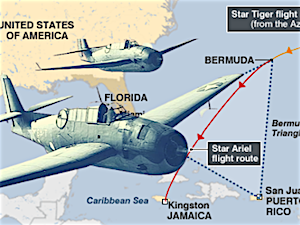
Meet the newest high-roller in the “Bermuda Triangle” world.
Since last July, Sixth Street, a fast-growing asset manager, acquired The Hartford’s old life/annuity business, established reinsurers in Bermuda and the Cayman Islands, and executed big capital relief deals with three large life/annuity companies.
In September, Lincoln Financial Group closed an ongoing “flow reinsurance” deal with Sixth Street’s insurers. On December 30, 2021, Allianz Life reinsured $20 billion worth of fixed indexed annuity contracts with the firm. This week, Principal Financial Group closed a $25 billion reinsurance deal with Sixth Street entities.
AM Best reported this week that Sixth Street and its insurance affiliates now manage $111 billion in insurance liabilities and surplus.
The flurry of 10- and 11-digit deals vaults Sixth Street, founded in 2009 and led by Michael Muscolino and Alan Waxman, two former Goldman Sachs executives, into the elite group of large asset managers, including Apollo/Athene, Ares, Blackstone, Brookfield, Carlyle, Eldridge, and KKR who now play an unprecedented role in supplying life insurers with capital and wringing higher returns out of their assets.

Michael Muscolino
These firms have mastered what RIJ calls the “Bermuda Triangle” strategy. The strategy generally involves three financial entities: a US life insurer that holds or manufactures annuity contracts, a Bermuda or Cayman firm that reinsures the annuity liabilities, and an alternative-asset manager.
In contrast to other Bermuda Triangle firms, Sixth Street is known as an “aggregator” of annuity contracts that life insurers would like to divest or reinsure. It differs from Athene and KKR, which have purchased life insurers and issue and reinsure their own annuities. It also differs from Blackstone, which manages money for insurers as a strategic partner. These businesses often position themselves as “Insurance Solutions” providers.
The three-way strategy
And the annuity industry certainly needs solutions.
As a whole, the life/annuity industry holds hundreds of billions of dollars worth of annuity and life insurance contracts, funded by policyholder savings and locked into various financial guarantees to those policyholders. Those contracts are high maintenance for the insurers; regulations require them to hold large amounts of semi-idle surplus capital against potential losses. Surplus capital requirements tend to rise when insurers earn less on the investments that finance their guarantees.
The life/annuity companies have turned to the Insurance Solutions teams at Bermuda Triangle practitioners for help. The firm’s Bermuda or Cayman reinsurer can use favorable local accounting rules to shrink the estimated cost of the annuity liabilities. This lowers the insurer’s surplus capital requirement—instantly “unlocking,” in some cases, tens or hundreds of millions of dollars for the insurer to use in new ways. Many publicly traded insurers use these windfalls to buy back shares of their stock. Others use it to invest in new lines of business.
RIJ asked one life/annuity executive, whose company has been through a Bermuda Triangle deal, to rate, on a scale of one to 10, the importance of the reinsurance/capital-relief component as a driver of these deals for life/annuity companies. “10,” he wrote back from his iPhone.
That insight applies to the recent Sixth Street deals. “For Allianz, Principal, and Lincoln, the capital release from the reinsurance is a key aspect. However, equally important is the impact on reserves by shifting the investment risk to reinsurer. For annuity insurers, reserve swings have significantly affected operating results,” said Scott Hawkins, an analyst at Conning.
Meanwhile, the life insurer hires the asset management or insurance-linked securities teams of the Bermuda Triangle companies to find higher-yielding investments. These asset managers–at Sixth Street or Blackstone or KKR–tout their ability to raise the investment returns of life insurers by selling them tranches of collateralized loan obligations or real estate-backed securities. These securities are often tailored to meet the life insurer’s risk/return requirements.

There are many variations to the Bermuda Triangle strategy. Sometimes a single holding company owns the life insurer, reinsurer, and the asset manager, as Athene does. As a source of incoming cash, the asset managers prefer fixed indexed annuity (FIA) assets. The lengthy terms of FIA contracts—up to 10 years—allow the asset managers to invest money in higher-yielding, longer-term investments.
Besides being “sticky” and predictable, existing FIAs are also relatively resistant to a rising interest rate environment; they rely on the appreciation of equity options for yield. That’s one reason why they began to replace fixed-rate annuity contracts two decades ago; Investors tended to break their existing fixed-rate annuity contracts when new annuities offered higher rates.
The Bermuda Triangle strategy has put hundreds of billions of dollars in motion. Principal said this week that its reinsurance deal with Sixth Street, which covers $16 billion worth of fixed annuity assets and $9 billion worth of ULSG ( universal life secondary guarantee) contracts, will release about $800 million in capital. “The company plans to return the proceeds to shareholders through share repurchases,” a Principal release said.
Sixth Street’s genealogy
Sixth Street jumped into the Bermuda Triangle strategy in 2021 by buying Talcott Reinsurance Life (the former Hartford Life Insurance Company) from Hopmeadow Holdings for $2.25 billion. It also set up the reinsurer Sutton Life Re in Hamilton, Bermuda (rated A- or Excellent by AM Best) and a similar reinsurer in Georgetown, Cayman Islands. It then executed the Lincoln, Allianz Life and Principal deals in quick succession.
After being acquired by Sixth Street, Talcott’s first reinsurance deal was with Lincoln National, last September. It was the “first flow variable annuity reinsurance transaction in recent years for a product actively sold in the market,” a Talcott release said. In flow reinsurance, annuity contracts are reinsured directly after they are written.
Talcott agreed to co-insure business written on Lincoln’s flagship variable annuity (VA) living benefit rider, which can give policyholders income for life. Exercising those riders may be optional for the policyholder, which means that the issuers have difficulty predicting how they will be used. The nagging presence of that risk drives up capital requirements.
The Lincoln-Talcott reinsurance treaty covers business written from April 1, 2021, through June 30, 2022, to a maximum of $1.5 billion. Lincoln will continue to service and administer the policies it reinsured.

Alan Waxman
On Dec. 3, 2021, according to a news report, Allianz Life Insurance Company of North America announced reinsurance agreements with Sixth Street’s Talcott unit and with a separate firm, Resolution Re, part of Resolution Life Group Holdings LP.
Under the transaction, Resolution Re agreed to reinsure $26 billion of Allianz Life’s FIA liabilities; it then “retroceded” $12 billion of the liabilities to Talcott’s Sutton Life Re affiliate in Bermuda. Separately, Sutton agreed to reinsure $8 billion of Allianz Life FIA liabilities. Like Lincoln, Allianz Life said it will continue to service the contracts it reinsured.
The dealmakers
Before going independent in 2009, Sixth Street was the former credit arm of TPG, a $109 billion private equity firm, according to the Wall Street Journal. The TPG Sixth Street Partners (TSSP) Adjacent Opportunities funds became Sixth Street’s “TAO” Investment funds. In 2020, Sixth Street caught the attention of Wall Street when it raised $24.7 billion through the TAO funds—an impressive sum, even by buyout-firm standards. In 2021, Sixth Street bought 20% of the San Antonio Spurs basketball team and a controlling interest in Legends Hospitality, a sports and live entertainment company co-founded by affiliates of the New York Yankees and Dallas Cowboys.
Muscolino told Institutional Investor magazine last December that Sixth Street began to explore the insurance business about five years ago. “We got to know the business, working within the regulatory framework, and understanding how to look out for policyholders,” he told the reporter.
In regulatory filings, Muscolino estimated his own net worth at $60 million and Waxman’s at $20 million. With a 1999 MBA from the University of Chicago Booth School, he spent time at Accenture, Goldman Sachs, and FG Companies. Waxman, a Penn graduate, was a group chief executive at Goldman Sachs and a vice-president at TPG before cofounding Sixth Street.
In one of its regulatory filings, Sixth Street indicated that it has the luxury of being able to invest in long-term deals without fear that its investors will panic and run. Annuity contract owners, for instance, can’t pull their money out of their contracts before the end of their terms without facing surrender charges.
As for its other stakeholders, Sixth Street told Connecticut insurance regulators last year, “The evergreen structure of the TAO Funds means they have no fixed term, and no liquidity requirement for individual investors or investments—investors cannot redeem their investments in the TAO Funds or otherwise cause the sale of underlying investments of the TAO Funds to generate liquidity.”
© 2022 RIJ Publishing LLC. All rights reserved.
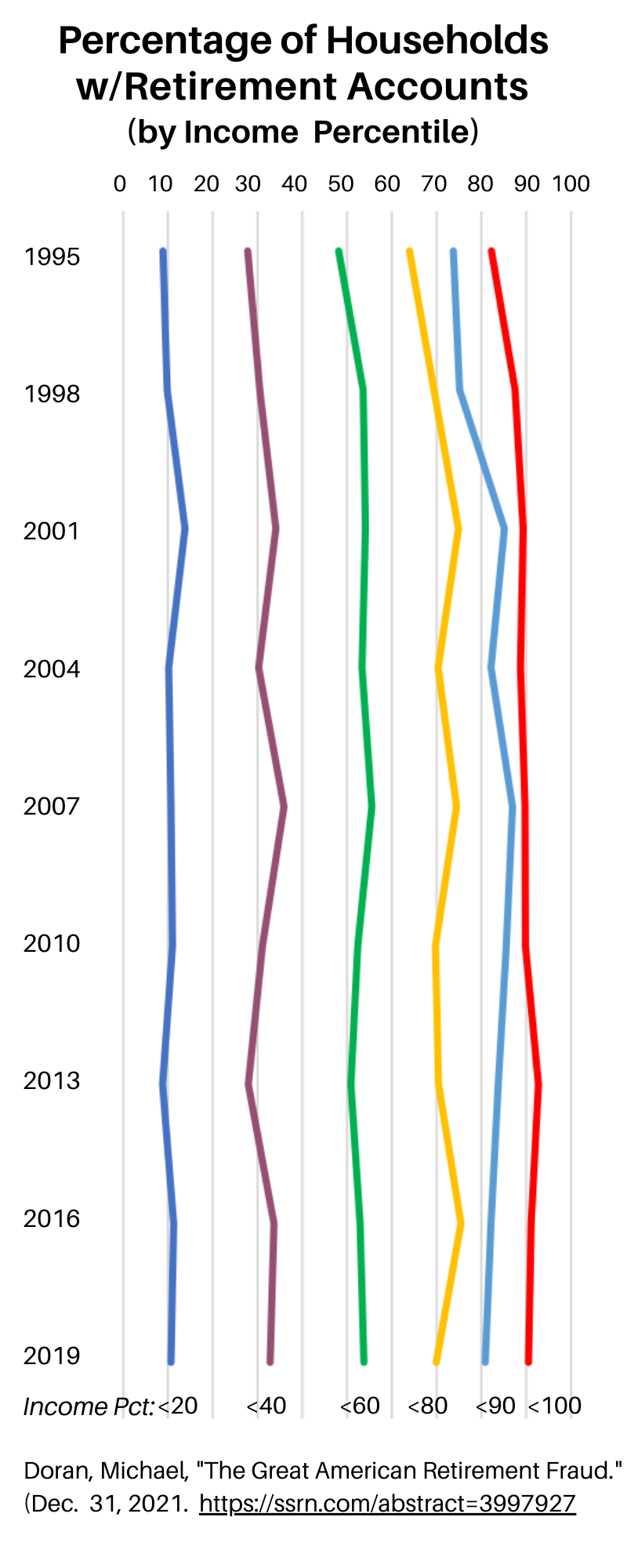

If common sense were more common, most people would easily recognize that if they bought a lifelong income annuity with a chunk of their savings, they’d be less likely ever to run out of money.
But some people are from Missouri, or other skeptical regions where you have to “Show Me.” So scholars like Moshe Milevsky of York University and Wade Pfau of The American College have demonstrated, with mathematical precision that people who add income-generating annuities to their retirement portfolios will reduce their “longevity risk”—their chance of running short of their target income before they die.
Now, in a recent white paper, Tamiko Toland of Cannex, the source of current annuity rates and other retirement resources, has reiterated the logic of income annuities. She uses the Cannex PrARI (Product Allocation for Retirement Income) modeling tool to show how an annuity can improve the Retirement Sustainability Quotient (RSQ, or probability of maintaining the target income for life) of a typical equities-and-fixed income retirement portfolio.
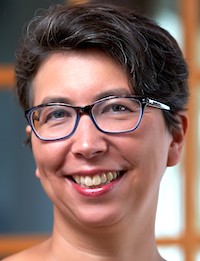
Tamiko Toland
Cannex hypothesized the RSQ and residual wealth of a 65-year-old man with $1 million in savings and a target annual income of $50,000 (in addition to Social Security benefits). With zero to $300,000, he buys a single premium immediate annuity (SPIA) with a 2% annual inflation rider that pays out an initial $4,950 per year per $100,000.
By my count, Cannex tested 42 possible allocations. Seven different amounts are allocated to the annuity (zero to $300,000) and the annuity is either paired with a balanced fund of $1 million (allocated 30%, 60% or 70% equities and the rest allocated to bonds) or it replaces part of the bond allocation in a $1 million portfolio.
You can see all the details in the report. It suggests that a portfolio of $700,000 in equities and a $300,000 annuity would optimize the portfolio’s likelihood (about 85%) of generating a $50,000 annual income over the man’s lifetime while providing the largest possible legacy ($265,000 ) to his heirs or beneficiaries when he died.
In every simulation, adding the annuity to a blend of stocks and bonds reduced the man’s legacy but, as expected, raised his RSQ. To use a sailing metaphor, a ship carrying extra ballast in the hull (the annuity), sails faster when you add extra canvas (equities).
Toland favors SPIAs over variable annuities (VA) or fixed indexed annuities (FIA) with living benefit riders. “The FIA has a shady history and often uses esoteric indexes that are difficult to understand and impossible to compare,” she writes.
“The VA is expensive and the guarantee is complicated… the client ends up paying for the cost of a benefit (even when [the cost] is not explicit, as is the case with many FIAs) whether they end up using it for its intended purpose or not.”
In saying, “The FIA has a shady history,” I assume Toland is referring to the reasons why state attorney generals, the Securities and Exchange Commission and the Department of Labor each tried to regulate FIAs at some point during the past 20 years. Annuity industry opposition stopped the SEC’s and the DoL’s attempts in 2007 and 2018, respectively, to regulate FIAs more closely.
If SPIAs are so great, why don’t more people buy them? Some observers blame low interest rates, which reduce the payout rates of SPIAs. But SPIAs were no more popular when interest rates were higher than they are today. A big part of the answer is that SPIAs aren’t lucrative enough for most insurance agents or for most life insurance companies.
SPIAs don’t pay very high commissions to independent agents and brokers. And, as a product category, they don’t yield the double-digit profit levels that shareholders of publicly traded life insurance companies demand.
That’s why mutual insurance companies like New York Life and MassMutual—owned by their policyholders—sell the most SPIAs, especially through their employee-agent force. While mutual companies need to be profitable (and pay a consistent dividend to policyholders), their business models allow them to sell modest products like SPIAs.
© 2020 RIJ Publishing LLC. All rights reserved.
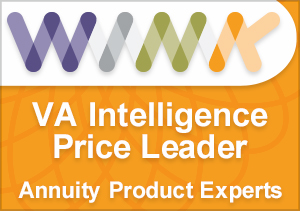
Wink, Inc., announced this week that subscribers to its AnnuitySpecs service, which gathers and distributes annuity and life insurance contract data and competitive intelligence, will have access to a new library of product-related resources on the firm’s WinkIntel.com site.

Sheryl J. Moore
“Our subscribers can access the data we’ve collected for decades and use it for their marketing, sales and competitive intelligence needs,” said Sheryl J. Moore, CEO of Wink, Inc., in a release.
The library will store product and rider specifications, product rates, and side-by-side product comparisons for each annuity covered by Wink’s AnnuitySpecs. It will also include regulatory filings, product marketing materials, and rates/states sheets, and a dashboard of recent product changes.
Also available will be historical rates on:
The new documents library allows Wink subscribers access to:
“As product experts, we have always retrieved the policy filings and collateral for each product to create the product specifications on the site,” said Moore. “This new enhancement lets our subscribers obtain these documents all in one library.”
© 2022 RIJ Publishing LLC. All rights reserved.

In recent years, the IRS has paid increased attention to what it regards as impermissible uses or operation of individual retirement accounts (IRAs). The recent Tax Court case of McNulty v. Commissioner, 157 T.C. No. 10 (November 18, 2021), is an illustration of the type of IRA strategy that the IRS has been challenging, in this instance successfully.
Ms. McNulty was the owner of a self-directed IRA. As such, she was entitled to direct how her IRA assets would be invested without forfeiting the tax benefits of an IRA, unless the investment constitutes a “prohibited transaction”. If there is a prohibited transaction, Section 408(e) of the Internal Revenue Code (the “Code”) provides that the account loses its IRA status and is considered distributed at the beginning of the taxable year.
A permissible investment in a self-directed IRA is an investment in a single-member limited liability company (LLC). Such an investment is not regarded as a prohibited transaction, because the LLC does not have any members at the time the initial investment is made and therefore is not a disqualified person at that time.
In the McNulty case, the LLC purchased American Eagle (AE) coins, intended to be titled in the name of the LLC, although there was no evidence in the record establishing who had legal title. While IRAs are prohibited from holding collectibles, Code Section 408(m)(3) provides an exception for certain coins, and the AE coins may have satisfied the conditions of that statutory exemption, an issue the Tax Court did not need to address in view of its holding. Up to this point, no issues under Code Section 408 were presented.
But Ms. McNulty then took physical possession of the AE coins and placed them in a home safe with non-IRA assets—other coins that she had purchased. In so doing, she relied on a statement on the LLC vendor’s website that advertised that an LLC owned by an IRA could invest in AE coins, and IRA owners could hold the coins at their homes, without tax consequences or penalties so long as the coins were titled to the LLC. The LLC marketers believed they had found a proverbial tax loophole, but the Tax Court disagreed.

Double Eagle Coins, about $2,000 each
There were two problems with taking possession of the AE coins and placing them in a safe in the taxpayer’s residence. First, Section 408(a)(5) of the Code provides that IRA assets may not be commingled with other property except in a common trust fund or common investment fund. The IRS’s position was that the taxpayer violated this provision when she stored the coins in her safe with non-IRA assets.
Her response was that there was no commingling of assets because the AE coins were labelled as IRA assets before being placed in the safe. The Tax Court was skeptical as to whether labelling an asset was sufficient to avoid the commingling of assets. Second, the Tax Court questioned whether storage in a safe satisfies the IRA requirement that assets requiring safekeeping be kept in an adequate vault.
This infrequently discussed provision of the IRS regulations will likely need to be considered in connection with IRA investments in crypto currency. Here, however, the Tax Court did not address the commingling issue, or other issues of disagreement between IRS and the taxpayer, because it held that her physical possession of the AE coins resulted in a taxable distribution to her.
The taxpayer argued that, by disregarding the purported ownership of the AE coins by the LLC, the IRS was seeking to elevate substance over form, an issue on which the IRS’s view has recently been rejected by four Circuit Courts in connection with investments by Roth IRAs.
The Tax Court questioned whether that was an issue in this case, since the LLC was a disregarded entity.
Nonetheless, to make clear that this was not a basis on which this case could be distinguished by future coin holders in self-directed IRAs, it stated that resolution of the issues did not depend on the LLC’s status as a disregarded entity or a separate legal entity.
According to the Tax Court, independent oversight by an IRA trustee or custodian to track and monitor an IRA’s assets is one of the key aspects of the statutory scheme under Code Section 408. It explained that an owner of a self-directed IRA may not take actual and unfettered possession of the IRA assets.
“It is a basic axiom of tax law that taxpayers have income when they exercise complete dominion over it. Constructive receipt occurs where funds are subject to the taxpayer’s unfettered command and she is free to enjoy them as she sees fit.”
Finally, the Tax Court rejected taxpayer’s argument that the flush language of Code Section 408(m)(3), which requires physical possession, only applies to bullion, and that AE coins are not bullion. It found no evidence of legislative intent to discontinue the fiduciary requirements generally applicable to IRAs for IRA investments in coin or bullion, and referred to statements in the legislative history supporting its conclusion.
To add insult to injury to the taxpayer, in upholding IRS’s assessment of the Code’s accuracy-related penalty, the Tax Court questioned whether the LLC’s website could constitute reasonable cause. It stated that, “Check Book’s website is an advertisement of its products and services, and a reasonable person would recognize it as such and would understand the difference between professional advice and marketing materials for the sale of products or services.”
© 2022 Wagner Law Group.
National Professional Planning Group Inc. (NPPG) has launched a new pooled employer plan (PEP) in collaboration with flexPATH and Voya Financial. NPPG will serve as the pooled plan provider (and PPP). NFP, a large insurance broker and consultant, will serve as the consultant firm for plan sponsors who want to join the PEP, to be called “Your 401(k) Plan.”
NPPG will also serves as the ERISA 3(16) plan administrator and will oversee the plan from day-to-day and ensure compliance with ERISA and IRS regulations. As the 3(38) fiduciary, flexPATH Strategies is the is responsible for fund selection and monitoring.
PEPs became available in the marketplace at the start of January 2021, as a result of the passage of the Setting Every Community Up for Retirement Enhancement Act of 2019 (the SECURE Act).
NPF will serve as the consultant firm for adopting plan sponsors of the new PEP. NFP assisted NPPG with the search and ultimate selection of Voya as the plan’s recordkeeper, and will serve as the consultant firm for plan sponsors who join the new PEP.
Under the SECURE Act, small businesses that want to offer their managers and employees a 401(k) defined contribution plan no longer need to establish and maintain their own plan. Now they can join other companies in a single large plan.
Within a PEP, participants enjoy the low costs associated with large plans while employers eliminate many of the administrative chores and risks usually associated with plan sponsorship. The federal government expects the widespread use of PEPs by small businesses to help extend retirement savings plan coverage to more small-company employees.
Metropolitan Tower Life Insurance Company, a subsidiary of MetLife, Inc., announced today it has completed a significant longevity reinsurance transaction involving an unnamed U.K. pension scheme, using an independent U.K. regulated insurer, Zurich Assurance Ltd. as intermediary.
The transaction, which was completed in Q4 2021, was MetLife’s first longevity swap of U.K. pension scheme liabilities. Aon was the lead adviser to the scheme for the transaction. Under the terms of the agreement, Metropolitan Tower Life Insurance Company will provide reinsurance for longevity risk associated with approximately $3.5 billion of pension liabilities.
“As MetLife’s first pension scheme longevity swap transaction, this marks an important milestone in the evolution of our UK longevity reinsurance business,” said Jay Wang, senior vice president and head of Risk Solutions with MetLife’s Retirement & Income Solutions business, in a release.
The Securities and Exchange Commission today voted to propose amendments to Form PF, the confidential reporting form for certain SEC-registered investment advisers to private funds. The proposed amendments are designed to enhance the Financial Stability Oversight Council’s (FSOC) ability to assess systemic risk as well as to bolster the Commission’s regulatory oversight of private fund advisers and its investor protection efforts in light of the growth of the private fund industry.
“Since the adoption of Form PF in 2011, a lot has changed,” said SEC Chair Gary Gensler. “The private fund industry has grown in size to $11 trillion and evolved in terms of business practices, complexity of fund structures, and investment strategies and exposures. The Commission and Financial Stability Oversight Council now have almost a decade of experience analyzing the information collected on Form PF. We have identified significant information gaps and situations where we would benefit from additional information.
Among other things, today’s proposal would require certain advisers to hedge funds and private equity funds to provide current reporting of events that could be relevant to financial stability and investor protection, such as extraordinary investment losses or significant margin and counterparty default events. I am pleased to support it.”
The proposed amendments would require current reporting for large hedge fund advisers and advisers to private equity funds. These advisers would file reports within one business day of events that indicate significant stress at a fund that could harm investors or signal risk in the broader financial system. The proposed amendments would provide the Commission and FSOC with more timely information to analyze and assess risks to investors and the markets more broadly.
The proposal also would decrease the reporting threshold for large private equity advisers from $2 billion to $1.5 billion in private equity fund assets under management. Lowering the threshold would result in reporting on Form PF that continues to provide robust data on a sizable portion of the private equity industry. Finally, the proposal would require more information regarding large private equity funds and large liquidity funds to enhance the information used for risk assessment and the Commission’s regulatory programs.
The proposal will be published on SEC.gov and in the Federal Register. The public comment period will remain open for 30 days after publication in the Federal Register.
Milliman released the fourth quarter (Q4) 2021 results of its Public Pension Funding Index (PPFI), which consists of the nation’s 100 largest public defined benefit pension plans.
Public pensions closed out 2021 with a funded status of 85.5%, up from 83.9% in Q3 and the highest recorded funded status since Milliman began tracking the PPFI in 2016. In aggregate, these plans experienced an investment return of 3.21% for the quarter, though individual plans’ estimated returns ranged from 0.57% to 6.80%. Nearly half of the plans in our study (46) are now funded over 90%, while 18 plans are funded below 60% – down from 21 plans in Q3.
“Over the past two years, public pension funding has climbed from a low of 66% funded to a high of 85.5% – a jump that can be largely attributed to positive investment returns during almost every quarter since Q2 2020,” said Becky Sielman, author of Milliman’s Public Pension Funding Index. “Looking to 2022, however, declines in the stock market coupled with predicted rising interest rates could result in asset values falling from their Q4 heights.”
© 2022 RIJ Publishing LLC. All rights reserved.
Total US annuity sales were $254.8 billion in 2021, up 16% from 2020. This represents the highest annual annuity sales since 2008, and the third highest sales recorded in history, according to preliminary results from the Secure Retirement Institute (SRI) US Individual Annuity Sales Survey.
Total annuity sales were $63.4 billion in the fourth quarter, 8% higher than fourth quarter 2020.
“Strong equity market growth in the fourth quarter and in 2021 propelled double-digit growth in both traditional variable annuity and registered index-linked annuity sales, resulting in strong year-over-year results,” said Todd Giesing, assistant vice president, SRI Annuity Research.
Total variable annuity (VA) sales were $32.3 billion in the fourth quarter, up 17% from prior year. In 2021, total VA sales were $125.6 billion, 27% higher than prior year.
Traditional VA sales were $21.7 billion in the fourth quarter, a 13% increase from fourth quarter 2020. For the year, traditional VA sales totaled $86.6 billion, up 16% from prior year. This ends nine years of declines for traditional VA sales.
“We have not seen traditional VA sales growth at this level in over a decade. Heightened concern about potential changes to the tax code drove growth in investment-focused, non-qualified product sales,” said Giesing. “In 2021, fee-based products experienced the largest gains as registered investment advisors and broker-dealers sought out tax-deferral solutions for their clients.”
Registered index-linked annuity (RILA) sales broke records in the fourth quarter and for the year. Fourth quarter RILA sales were $10.6 billion, 26% higher than prior year. In 2021, RILA sales were $39 billion, 62% higher than prior year.
“In 2021, RILA sales benefited from current economic conditions and expanded competition as new carriers enter the market,” noted Giesing. “SRI predicts investors will continue to seek solutions that offer a balance of protection and growth — which these products offer — in 2022, continuing RILA sales’ upward trajectory.”
Total fixed annuity sales were $31.1 billion, level with fourth quarter 2020 results. For the year, total fixed annuities increased 7% to $129.2 billion.
Fixed indexed annuity (FIA) sales were $16.6 billion, an 18% increase from fourth quarter 2020. FIA sales were $63.7 billion in 2021, up 15% from prior year. This marks the largest annual growth for FIA products in three years.
“Improved interest rates and product innovation around cap rates helped address the pricing challenges FIA carriers faced early in 2021, making the products more attractive to investors,” Giesing said. “In addition, we see growing interest in accumulation-focused FIA products, as investors seek principal protection with greater investment growth to offset rising inflation.”
Fixed-rate deferred annuity sales were $11.3 billion in the fourth quarter, an 18% drop from fourth quarter 2020 results. For the year, fixed-rate deferred sales totaled $53.4 billion, 2% higher than prior year.
“Today, short-duration fixed-rate deferred products offer, on average, three times the return of CDs, making them much more attractive to investors,” Giesing said. “As a result, fixed-rate deferred sales were at their highest level since the Great Recession, despite the low interest rate environment.”
Immediate income annuity sales were $1.6 billion in the fourth quarter, the same as fourth quarter 2020. For the year, immediate income annuity sales fell 5% to $6 billion.
Deferred income annuity sales increased 6% to $480 million in the fourth quarter. In 2021, total deferred income annuity sales were $1.9 billion, up 14% from prior year but well below the $2.5 billion in sales achieved in 2019.
“Despite improving interest rates, payout levels have not increased for income annuities in 2021,” Giesing noted. “It is unlikely under current market conditions that this market will rebound to levels seen in 2018 and 2019.”
Preliminary fourth quarter 2021 annuity industry estimates are based on monthly reporting, representing 85% of the total market. A summary of the results can be found in LIMRA’s Fact Tank.
The 2021 top 20 rankings of total, variable and fixed annuity writers will be available in March, following the last of the earnings calls for the participating carriers.
© 2022 RIJ Publishing LLC. All rights reserved.

We are in a new and unusual market regime, underpinned by a new macro landscape where inflation is shaped by supply constraints. Limits on supply have driven the surge in inflation over the past year: a profound change from the decades-long dominance of demand drivers.
This fundamentally changes how we should think about the macro environment and the market implications. The key to understanding the muted response of central banks to inflation is not the timeframe but its cause: supply. Much of the 2021 debate overlooked this.
Two broad types of supply constraint are at play in the economic restart. First, it is easier to bring back demand than production, which is constrained by the weakest link in the supply chain. But another important constraint is the reallocation across sectors due to Covid restrictions: consumer spending has shifted massively towards goods and away from contact-intense services.
This has meant severe bottlenecks in some places and spare capacity in others. Prices tend to rise faster in response to bottlenecks than they tend to fall in response to spare capacity, so this has pushed inflation higher, even though overall economic activity has not fully recovered. Developments at the sector level are shaping the macro picture.
The restart gives a glimpse of how the transition to net-zero emissions will play out: it will be akin to a drawn-out restart. Economy-wide supply limits will bind as energy costs rise. Big shifts across sectors will create supply bottlenecks. Both will add to inflation, as in the restart. A gradual, orderly transition is the least inflationary path, in our view. Whether or not carbon emissions are reduced, we believe climate change will increase inflation.
A rewiring of globalization and population aging in China are reducing the supply of cheap imports from China to developed markets. This will raise costs and force resources to be reallocated in those markets, making supply constraints more common. In addition, geopolitical risks threaten to disrupt energy supply.
A world shaped by supply constraints will bring more macro volatility. Monetary policy cannot stabilize both inflation and growth: it has to choose between them. This is a marked shift in the macro landscape. When inflation was driven by demand, stabilizing inflation also stabilized growth – there was no trade-off.
Central banks should live with supply-driven inflation, rather than destroy demand and economic activity – provided inflation expectations remain anchored. When inflation is the result of sectoral reallocation, accommodating it yields better outcomes, as recent research (Guerrieri et al, 2021) shows. Insisting on stabilizing inflation would lead to an over-tightening of monetary policy, more demand destroyed and a slowing down of the needed sectoral reallocation. Given the persistence of supply constraints over many years, delivering the best outcome might require further adjustments to central banks’ inflation-targeting frameworks.
We expect the sum total of rate hikes in this cycle to be low. Central banks will take their foot off the gas to remove stimulus – but they shouldn’t go further to fight inflation, in our view. Yet we expect negative bond returns as, faced with inflation volatility in this environment, investors question – as they have in recent weeks – the perceived safety of holding longer-term government bonds at historically low yield levels.
The primary risk we see is that central banks hit the brakes by raising rates to restrictive levels. As in recent weeks, we can expect markets to price some of this at points, as they adapt to the new macro landscape. But if central banks do go ahead and hit the brakes, they will likely learn that the damage to growth to get inflation down is too great and will be forced to reverse course – flattening or even inverting yield curves.
© 2022 BlackRock.

“Structured” annuities and exchange traded funds (ETFs) have proliferated in recent years as a kind of Goldilocks investment for people who want exposure to stocks and are willing to give up some of their potential reward for partial protection against risk of loss.
Now AIG, the giant annuity manufacturer, and Milliman Financial Risk Management, have taken elements of structured Registered Index-Linked Annuities (RILAs) and of Defined Outcome ETFs (a series issued by Innovator Capital Management and subadvised by Milliman) into “Advanced Outcomes Annuities,” a suite of variable annuities issued by American General Life, an AIG company.
Like RILAs, these funds use pairs of put and call options to capture part of the performance of an equity index. The indexes in these funds are the price-only versions (no dividend yield) of the large-cap S&P 500, the tech-heavy NASDAQ-100, the Russell 2000 small-cap index and the global MSCI EAFE.
Along with downside protection, an investor in these funds enjoys the tax-deferral of an annuity and the liquidity of an ETF. While the funds have specific start dates and term lengths (six months, one year or six years), their prices change daily and investors can enter or leave when they want or need to.
Like B-share variable annuities, the Advanced Outcomes Annuities are sold through broker-dealers by commission. Their fees resemble the fees of B-share products. They have surrender fees (7% in year one), annual contract fees (1.25%) and fund fees (0.99%). They also have an optional guarantee against long-term loss.
Prospective investors in these funds should be aware that AIG signaled in October 2020 that it plans to divest or spin off its life and retirement businesses, including annuities. MetLife made a similar move in 2016 when it created Brighthouse Financial. AIG declined to comment on what that might mean for contract holders.
The latest funds
The most recent flight of Advanced Outcomes Annuity offerings include five one-year funds, two six-month funds, and two six-year funds. During each term, the funds are priced daily. Investors can jump into and out of the funds to create their own durations, but their performance will vary depending on the fund’s prices when bought and sold.
“Each fund has its own target payout profile, each has its own upside target and downside protection target. These are managed like registered index-linked or structured annuities. But our product is not a RILA, it’s a variable annuity,” Adam Schenck, managing director, Head of Fund Services at Milliman FRM, said in an interview.
The amount of the investor’s money that is used to buy options on one of the indexes depends in part on the performance of the “collateral fund” into which most of the money is invested. Most of the collateral fund is invested directly or indirectly in fixed income investments.
One year crediting term funds:
Six-month crediting term:
Six-year crediting term
Bryan Pinsky, president, Individual Retirement, AIG Life & Retirement, said these products were designed in part on the basis of feedback from financial advisers. That feedback led to the “Capture-Reset-Reinvest” feature for liquidity. It also led to three crediting methods:
“As we talked to advisers, we heard loud and clear their desire for flexibility. Because of the nature of the funds, the duration can be whatever they want it to be. The six-month strategy lets them capture gains and reset more frequently,” Pinsky told RIJ. “It brings Milliman’s expertise from the Innovator Defined Outcome ETFs into AIG’s tax-deferred wrapper.”
AIG also adds optional guarantees that stop the total possible loss over six years at either -10% or -20%.
© 2022 RIJ Publishing LLC. All rights reserved.

A fictional Florida couple’s agony throbs at the heart of “The Baby Boomer Dilemma: An Expose of America’s Retirement Experiment,” a new film about America’s retirement financing woes. The movie ends with the wife weeping tears of regret and recrimination because her husband failed to opt for a pension or buy an annuity.
Yes, an annuity. In Doug Orchard’s Ken Burns-ish documentary, an A-list of US retirement experts take turns telling the back-story of retirement financing in the US since World War II before finally converging on a fairly strong endorsement of income annuities.
By the end of this 85-minute cautionary tale, some viewers might want to run out and, like Tom Hegna, buy a dozen annuities. It’s no wonder that financial advisers are renting this film and showing it to groups of middle-aged prospects. (The film can be downloaded for $29.99.)
Orchard visited the subject of retirement in an 2018 film on the national debt (“The Power of Zero”). Here he taps into a network of professors, annuity industry people, former regulators and others who understand (and in some cases helped create) the products and the policies that have shaped retirement financing in the US.
Readers of RIJ over the past decade may recognize some of the commenters. Respected academics Moshe Milevsky, Olivia Mitchell, Brigitte Madrian appear here, along with the late David Babbel of Wharton. Two Nobel economist/entrepreneurs, Robert Merton and William Sharpe, offer their views.
Former officials, whistleblowers and authors also adorn the cast. There’s a former Comptroller General of the US, an attorney who blew the whistle on bankers who fleeced a pension plan, a former president of the National Association of Insurance Commissioners, and congressman Michael Gallagher (R-WI).

Tex Benna
We even meet Tex Benna, the reputed “father of the 401(k).” Ambling about his grassy horse farm near Philadelphia, Benna explains his discovery of a subsection of the Internal Revenue Code–(401(k)–that would permit the tax-deferred, private-sector defined contribution savings plans that tens of millions of American workers participate in today.
As the movie warms towards annuities, people who frankly love annuities take center stage. We meet celebrity retirement speaker and author Tom Hegna on an Arizona golf course (and in his kitchen with his spouse, Laura). In a office in Des Moines, amid foot-high stacks of reports-to-be-read and items-to-be-filed, we find Sheryl Moore, founder of annuity consulting firm Wink, Inc., whose life goal is to “rebrand annuities” in a positive way. I know several of these experts; I could tell that the filmmaker knows how to draw people out.
Alternately back and forth between interviews with these well-known retirement mavens, Orchard tries to simplify and condense the tumultuous history of defined benefit pensions, 401(k)s, and Social Security. People with no prior knowledge of this history—the prequel to our world today—may strain to catch some of the references.
We hear about the rise and fall of corporate pensions. Olivia Mitchell covers the history of the modern private pension from the wage controls of World War II to the failure of Studebaker’s plan in 1963, to the passage of the Employee Retirement Income Security Act of 1974, to the underfunded public pensions of today.

Moshe Milevskly
The 401(k) defined contribution plan has of course succeeded the pension as the primary employer-sponsored tax-favored retirement savings vehicle. These plans have helped Americans save trillions of dollars for retirement, Benna tells us, but at the cost of exposing innocents to the risks of the stock market. If there’s a heavy in this film, it’s the 401(k).
The film doesn’t dispel a viewer’s doubts about the state of Social Security. We learn about the program’s financing crisis in 1980s, George W. Bush’s push in the early 2000s to partially “privatize” the program, and the shortfall in funding that it might face in 2034. (Critics harp on the idea that Social Security’s future liabilities are “unfunded.” But our government has “print on demand” money. It doesn’t need to pre-fund future expenses, nor should it.)
The film also makes passing references to esoteric phenomena like “sequence-of-returns risk” and “mortality credits.” Each of these hard-to-unpack topics might sustain its own movie, and maybe its own six-part Ken Burns epic. Orchard keeps up a swift pace—maybe too swift for the average viewer.
In the final section of the film, the conversation shifts subtly from big picture public policy matters to individual annuities. “Annuities” are positioned as a solution to the dilemma posed by the disappearance of defined benefit plans and the lack of provisions in most 401(k) plans for converting savings to retirement income.
Here you will meet people who rave about annuities. Hegna, pausing between putts, explains that he owns 11 different annuities. Babbel says that he owns 14 annuities, half of them still growing tax-deferred and half of them switched on and delivering monthly income. We learn that Moore wants her tombstone to reflect her lifelong quest to redeem the reputation of annuities and save America’s elderly from poverty.
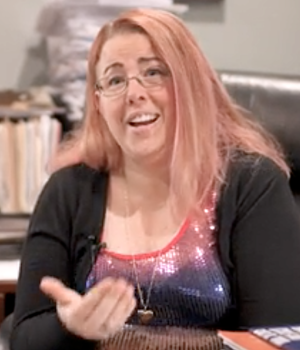
Sheryl Moore
Economists, Milevsky tells us, tend to disagree on every possible matter except one. They all believe that annuities are a good idea for retirees. He urges 65-year-olds to put 20% to 60% of their savings into a lifetime income annuity. Mitchell suggests carving out 10% of 401(k) the savings at retirement to buy an annuity that starts paying out at age 80.
We don’t learn too many details about annuities as specific financial products. Orchard’s film doesn’t name the many kinds of annuities, or describe their different purposes. It doesn’t distinguish between the types of advisers and agents who sell them or between the types of life insurers that issue them. That’s a wise choice of the filmmaker, because the details are devilish—and eye-glazing.
“The Baby Boomer Dilemma” collapses some 75 years of retirement policy history into less than an hour and a half of cinema. And it all collapses on the head of one unfortunate 62-year-old driver’s exam official in Florida, who appears to have lost half his family’s savings in a stock market crash.
The movie’s finale reminded me of the ending of the Pulitzer Prize-winning 1949 drama, The Death of a Salesman. Willy Loman, only 63, has just killed himself. His widow, Linda, sobs: “I made the last payment on the house today. Today, dear. And there’ll be nobody home. We’re free and clear. We’re free. We’re free.”
The Lomans lost hope prematurely, and I wanted to reassure the desperate housewife of this film: “It’s not so bad. Your husband can work five more years and get a bigger Social Security benefit. Your stocks will bounce back by then. Roll with it.” As the film’s title points out, Baby Boomers don’t face a retirement tragedy. They just face a dilemma.
© 2022 RIJ Publishing LLC. All rights reserved.

To become eligible to market their products to retirement savers in the UK—who have some half a trillion pounds ($680 billion) in their “pension pots”—private equity (PE) fund managers are considering lowering their annual expense ratios, Bloomberg reported.
But the PE firms may want bigger performance bonuses in return.
As the UK government pushes for more retirement savings to be invested into alternative assets—infrastructure, affordable housing, technology firms, illiquid products—both the government and the private equity firms have reasons to compromise.
Buyout firms say they might reduce their usual 2% management fees if they can keep their performance-related payouts, which are contingent on meeting return targets, according to the Department for Work & Pensions, the UK’s equivalent of our Labor Department.
Fees on target date funds, into which retirement savers can be defaulted (in both the US and UK) are currently capped at 0.75%. The government is asking for public comment on whether a performance fee could exceed that cap. One model being considered would see the buyout firms get 30% of any profits, instead of the usual 20%.
If they reduce their expense ratio, private equity firms could get more access to the UK’s pool of defined contribution retirement savings. That pool, the savings of millions of workers, grew 45% to 471 billion pounds between 2015 and 2020, according to the Pensions Policy Institute. Such accounts, equivalent to 401(k)s, represent the savings of millions of workers.
Resolving the level of fees “is one of the last major operational or structural issues for DC investment into private markets,” said James Monk, head of Defined Contribution Investment at pension consultants Aon Plc.
Private equity supporters say their products would help investors diversify their portfolios while investing more in the “real economy.” But pension fund trustees wonder if a performance fee can be fairly calculated for investors.
“Members will come in, go out, have different asset values, different contribution structures,” said Stephen Budge, partner at pension advisers Lane Clark & Peacock. “How do you make sure members are fairly charged for the performance they have received?”
Abrdn Plc (formerly Standard Life Aberdeen Plc), Legal & General Group Plc and Phoenix Group Holdings Plc are expected to roll out private market products should the rules be relaxed, Bloomberg reported.
Some DC pension plans already include private market strategies as investment alternatives. NEST, the public-option defined contribution plan, appointed BNP Paribas SA to run a private credit portfolio in 2019.
Last summer, NEST began seeking private equity partners to help the firm invest 1.5 billion pounds in private assets by 2024. Partners Group Holdings AG’s Generations Fund has around $1 billion in DC assets invested in private assets.
© 2022 RIJ Publishing LLC.